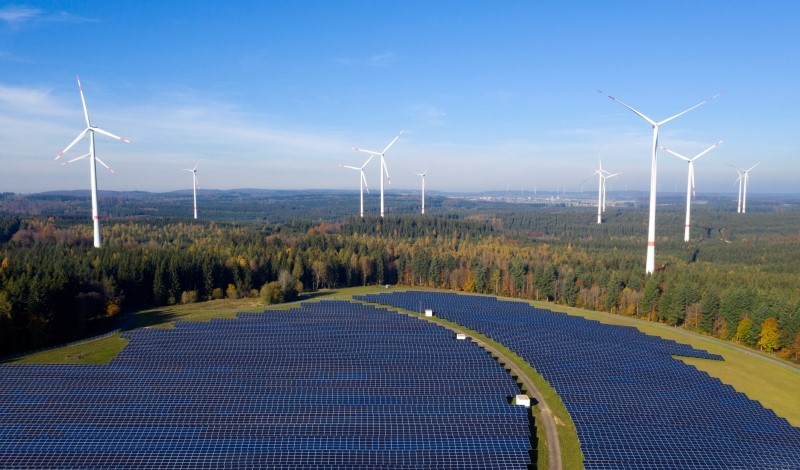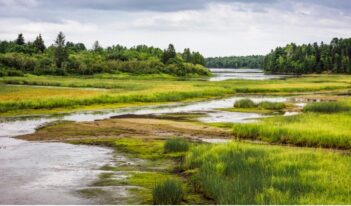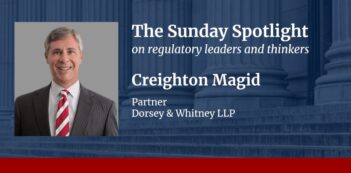
Scholars argue that federal agencies can conserve land and still increase renewable energy output.
During his first few months in office, President Joseph R. Biden issued two important environmental directives: one aimed to conserve public lands, the other aimed to reduce carbon emissions. In a forthcoming article, two law professors argue that these two presidential directives have created a “green clash.”
Devoting sizeable chunks of public land to renewable energy facilities will displace— or even kill—wildlife and could affect water quality and aquifer levels, argue Sandra Zellmer, a professor at University of Montana Law School, and Robert Glicksman, a professor at George Washington University Law School. They discuss how, to remain faithful to both land conservation and green energy goals, the Bureau of Land Management (BLM) and the U.S. Forest Service must innovate when managing multiple-use, sustained yield land.
The dual environmental aims of biodiversity conservation and carbon dioxide-elimination lie at the heart of this “green clash,” contend Zellmer and Glicksman. With the development of large swathes of federal lands for renewable energy facilities, displacement and death of wildlife occurs through collisions, “destruction of migratory corridors,” and “disruption of foraging, hunting, mating, and other essential behaviors.” These harmful effects are exacerbated because on-shore wind and solar facilities occupy significantly more space on average than their fossil fuel counterparts.
These wind and solar facilities will need to cover 230,000 square miles of federal land—an area larger than the states of Arizona and Colorado combined—by mid-century if President Biden is to achieve his goals of a carbon pollution-free electricity sector by 2035 and net-zero emissions economy-wide by 2050.
By virtue of its sheer magnitude, President Biden’s land conservation directive—known as the “30 by 30” initiative because it calls for the conservation of 30 percent of U.S. land by 2030—contains many of the nation’s intact ecosystems and habitats for endangered and threatened species. These characteristics make public land management indispensable for reaching the “30 by 30” goal.
Zellmer and Glicksman focus on multiple-use, sustained-yield land, which accounts for just over two-thirds of all federally-managed lands, for a few key reasons. Multiple-use land—unlike land found in the National Park System or the National Wildlife Refuge System—is far less restricted for high-impact resource development.
Furthermore, Zellmer and Glicksman emphasize that multiple-use land management principles give the Forest Service and BLM a great deal of discretion. For decades, these agencies have been using that discretion to accommodate non-renewable energy projects and resource extractions. More recently, agencies have begun to approve applications on an unprecedented scale for renewable energy projects on federal lands. As renewable energy development on public lands increases, so will the effects on ecosystems and conservation efforts.
In response to the adverse effects of development, Zellmer and Glicksman cite academic studies showing how environmental harm can be minimized. They contrast renewable energy generation with fossil fuels, noting that renewable projects can operate indefinitely unlike fossil fuels, which need to move to subsequent sites after exhausting the resources in one place. Zellmer and Glicksman also note that the expansion of renewable energy production directly contributes to climate change mitigation by reducing overall greenhouse gas emissions. Climate mitigation enables species conservation and recovery on a wider scale because higher temperatures can damage ecosystems and disrupt things such as reproduction and migration patterns.
Zellmer and Glicksman identify helpful regulatory tools that the Forest Service and BLM possess in managing multiple-use lands that could be used to meet “30 by 30” goals and resolve the “green clash”—including some tools that have been neglected or even wielded to promote land development.
In particular, Zellmer and Glicksman focus on the Forest Service’s forest plans and the rules governing the creation of the plans as key mechanisms to encourage responsible development. Forest plans set the rules for development and conservation at a forest wide scale and must be revised at least every 15 years, enabling conservation values to extend over large swathes of terrain for long periods of time.
Pivoting to BLM, Zellmer and Glicksman delve into ways that the agency can achieve the “30 by 30” target. Among these, BLM can designate “areas of critical environmental concern” (ACEC). By categorizing land as critical in this way, BLM implies that an area needs special management to protect and prevent irreparable harm. In short BLM can proceed with other actions that save the land from development once the agency designates land as an ACEC.
BLM can also act on its statutory duty “to prevent unnecessary or undue degradation,” which would allow the Bureau to prevent energy projects that would hinder conservation. Because this duty has been interpreted to be ambiguous, BLM could use its authority to improve the land beyond its current state.
In addition, BLM can create rights-of-way, sales, and exchanges in pursuit of “the public interest.” The discretion that BLM can apply to define public interest is wide, argue Zellmer and Glicksman. Exchanges and sales, partnered with land acquisitions, could protect ecological integrity through consolidation and formation of wildlife corridors.
After exploring the relative strength of each administrative tool, Zellmer and Glicksman advocate a blended and balanced approach to deal swiftly and effectively with the “green clash.” This approach lies somewhere between “analysis paralysis,” where years can pass and nothing is decided definitively, and free-range approval of any prospective permit. Although Zellmer and Glicksman refer to errors committed by the two agencies in a push to approve renewable projects, they also cite successful turnarounds, such as instances in which land use plans were amended to account for wildlife disturbances.
The agencies’ ability to approve renewable energy development plans and permits rapidly must be tempered by minimizing avoidable adverse environmental impacts and actively pursuing wildlife conservation overall. Zellmer and Glicksman conclude that through the study of past agency pitfalls and successes, the Forest Service and BLM can achieve balance between conservation and renewable energy production, and ultimately accomplish multiple environmental goals.



